Horne Family's Garden Coop
 Tuesday, October 24, 2017 at 3:14PM
Tuesday, October 24, 2017 at 3:14PM For the first few months, the Horne family’s six baby chicks looked so cute in the snug little coop that they found online.
But a year later, when it was time to close up the coop for the night, their fully grown backyard flock looked like circus clowns squeezed inside a Volkswagen Super Beetle. The small run that was added later, was built too low to the ground, and never really achieved the spacious coop environment that the family wanted to create for their hens.
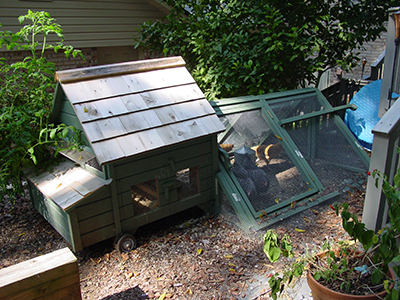
The Garden Coop design was the answer. The roomy coop is large enough for up to eight hens, and makes an even more comfortable coop for the Horne’s flock of six.
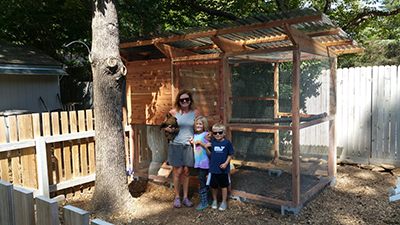
The extra space is especially helpful in giving their younger birds plenty of space apart from the sometimes moody, older hens. The outer dimensions of the Garden Coop measure about 6’x10’, and the walk-in design has excellent ventilation, and features a human entry door on the front side of the coop.
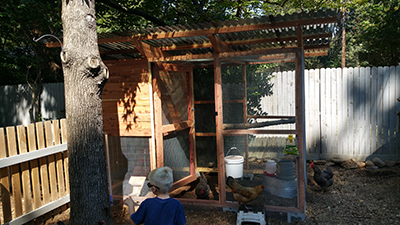
We framed the Horne Family’s Garden Coop with Eastern Red Cedar, which is naturally resistant to weather, and decay, and the roost box was also sided with red cedar. The walls of the coop were carefully wrapped with 1/2” galvanized hardware cloth, which is buried about 12” deep around the entire perimeter of the coop, and is sturdy enough to keep out common predators like hawks and raccoons, as well as larger ones like coyotes and dogs.
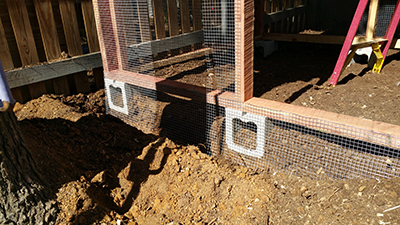
One of the best things about the Garden Coop is the fully covered run that’s built into the design. Tinted polycarbonate panels placed with a generous amount of overhang, all the way around the coop, will help keep the family’s flock cool on hot summer days, and dry and comfortable, on cold, wet, days in winter.
Horne Family's Cedar Garden Coop from Microfarm Organic Gardens on Vimeo.
Chickens love roosting on live branches, and we found the perfect hardwood branch for the outer roost that’s around 4” in diameter ; thick enough for the hens to perch comfortably, without cramping their feet. The branch inside the roost box is slightly smaller, but placed so that all six hens can perch together inside, on cold nights. We even made the rungs on the ladder with small sections of branch, which are easier to grip, and just more fun than milled lumber or dowels.
To make it a little easier to collect eggs, Susan requested that the egg door - which is usually placed on the front of the roost box - be placed on the left side of the coop, where it’s easy to reach without going inside the fenced area where the coop sits. And while even larger groups hens will often all use the same nest box, for the Horne Family’s backyard flock of six, we still included a partitioned double nesting box, where both sides can be reached from the single egg door.
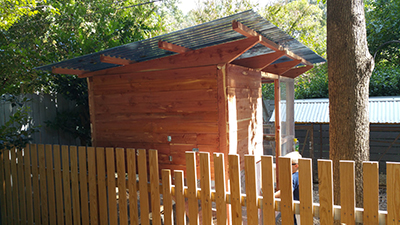








Reader Comments